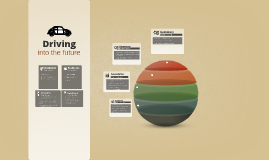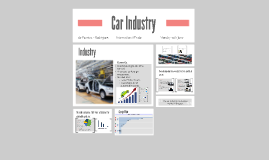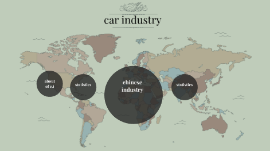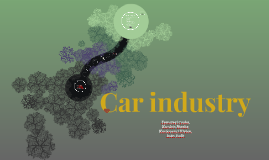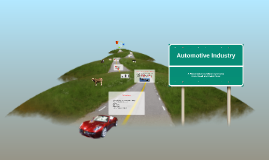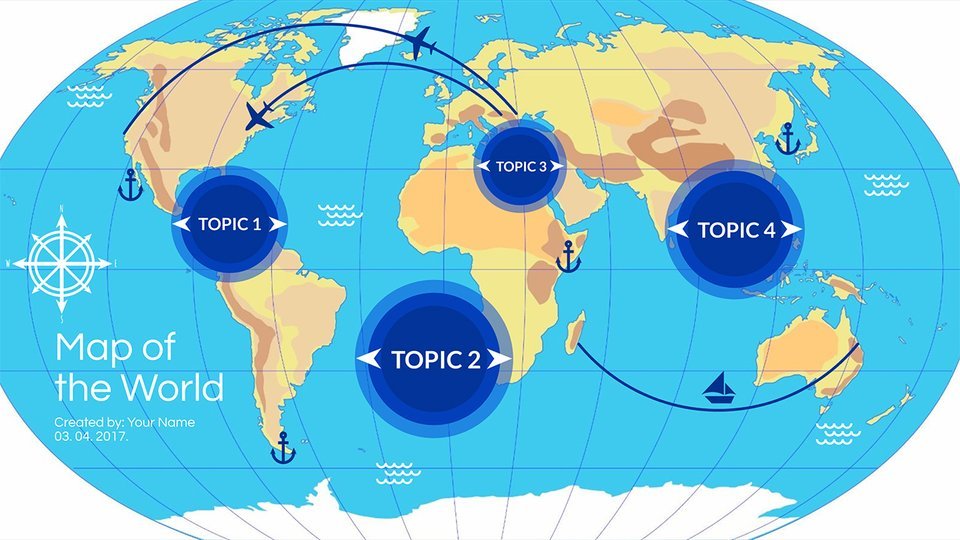car industry
Transcript: car industry about of c.i about a car ASTANA. KAZINFORM - The automotive industry in Kazakhstan is gaining momentum, Kazinform has learned from Khabar 24. Last year the output of domestic cars increased by 72%. The product value totaled KZT 185 billion. According to financiers, car manufacturing is becoming the fastest growing industry in the non-resource economic sector. The construction of a new car factory in Oskemen, East Kazakhstan region, will positively affect the scale of production as 60 thousand cars are expected to come off the conveyors of the new car plant in 2020. The company will additionally require around 1,000 employees. All of the products are manufactured at a plant in Kostanai, which has been operating for seven years. Every year, the facility increases its volume of exports to neighboring countries. statistics CAR INDUSTRY Kazakhstan’s car manufacturing industry doubled its production volumes in 2018 compared to 2017. More than 32,000 cars were produced in Kazakhstan in 2018. 30 percent of spare parts were produced in Kazakhstan. The manufacturers are set to increase the share of the locally manufactured parts to 50 percent. Sales for the Kazakhstan-made cars are increasing. The top five most popular car brands in Kazakhstan include four car brands manufactured in the Republic. In general, over the past three years, the demand for Kazakhstan-made cars increased from 17% to 49%. This suggests that cars manufactured in Kazakhstan are becoming more affordable due to financial measures such as concessional lending. It should be mentioned that by the end of 2019, the East Kazakhstan automakers are planning to deliver 30,000 new cars to dealerships. “We send a lot of equipment to Russia and Tajikistan and we are considering other countries. Our export volumes are increasing thanks to the policy of our state, which help us to cooperate with other Central Asian countries and Russia,” chinese industry chinese car As incomes in China have risen, so have Chinese consumers’ interest in products that were previously out of their reach. Automobiles fall squarely into this category. In 2005, approximately six million vehicles were sold in Greater China. In 2012, that number had climbed to nearly 19 million, making Greater China the largest automobile market in the world. While this exceptional compound annual growth rate (CAGR) of 18.1 percent is not expected to continue, there is no doubt that Greater China will remain the number one carbuying nation for years to come. Market Recent Accenture research confirms that when it comes to deciding which car to buy, Chinese consumers rely predominantly on four factors: friends and colleagues, family members, manufacturer websites and social media The automotive industry in China has been the largest in the world measured by automobile unit production since 2008. Since 2009, annual production of automobiles in China exceeds that of the European Union or that of the United States and Japan combined. PICTURES PICTURES The Landwind X7 (left) and Range Rover Evoque (right A BYD coupé (left) and a Mercedes-Benz CLK-Class (C209) (right statistics The number of registered cars, buses, vans, and trucks on the road in China reached 62 million in 2009.[13] The consultancy McKinsey & Company estimates that China's car market will grow tenfold between 2005 and 2030.[14] China had about 250 million cars by the end of June 2019, according to the Ministry of Public Security European brands Auto-sales-statistics-China-Mercedes_Benz_A_Class_L-sedanSo European brands actually still did pretty well in China last year, and the dominant market leader Volkswagen saw a tiny decline of 0,3% to improve its stranglehold on the market to 13,4% as the brand enjoyed a third consecutive year above 3 million sales. In 2010, both sales and production topped 18 million units, with 13.76 million passenger cars delivered, in each case the largest by any nation in history. In 2014, total vehicle production in China reached 23.720 million, accounting for 26% of global automotive production






